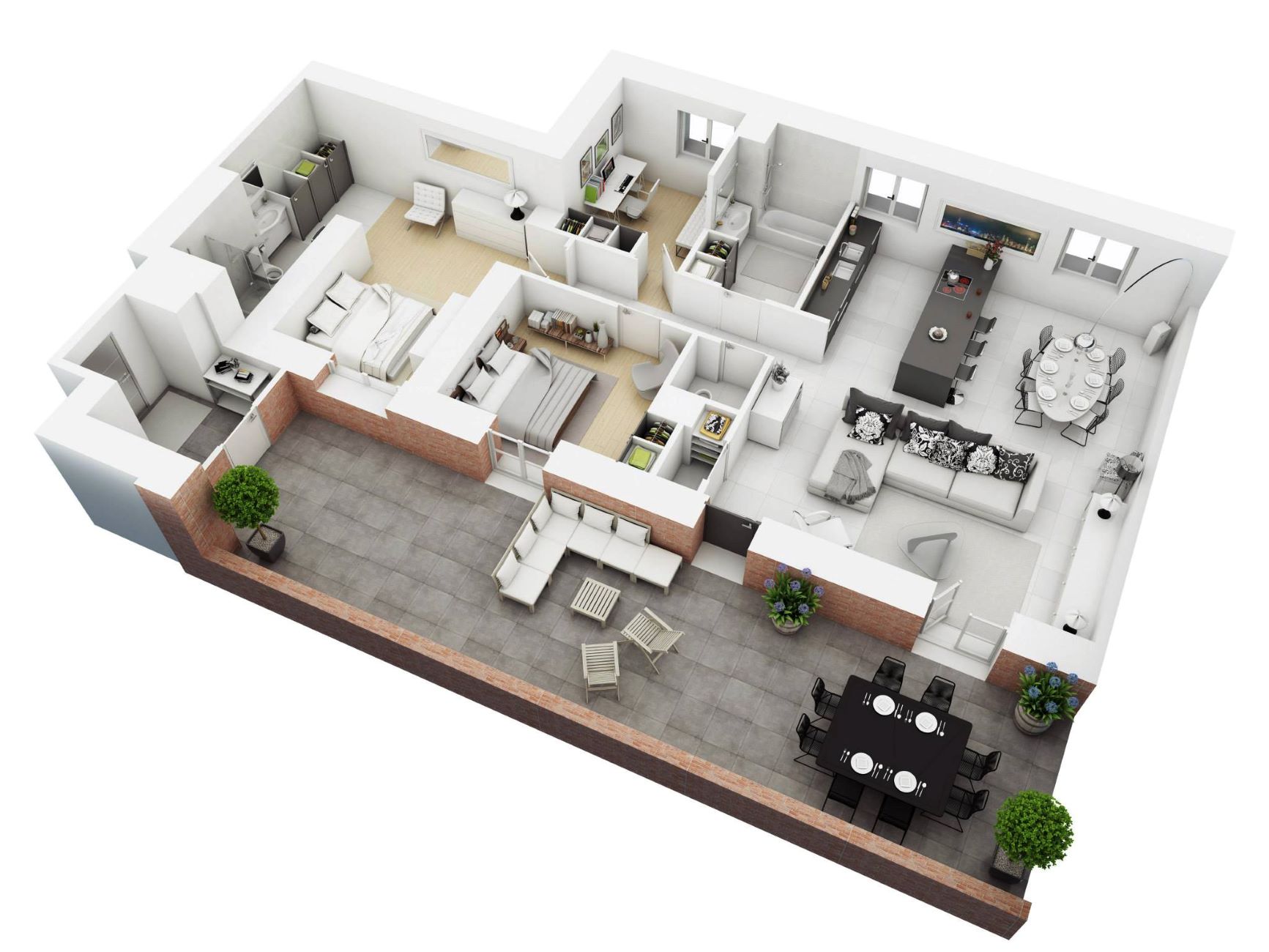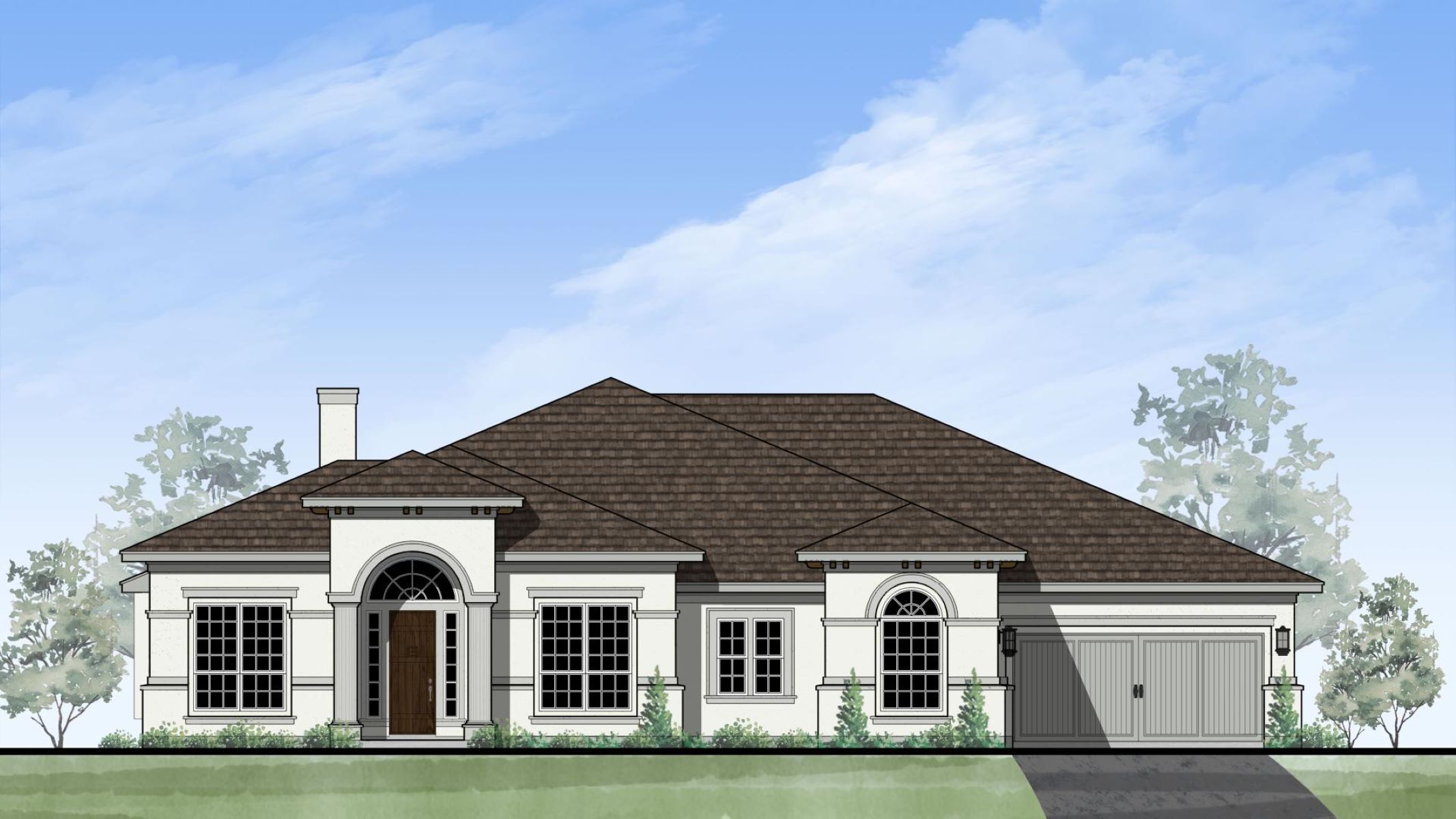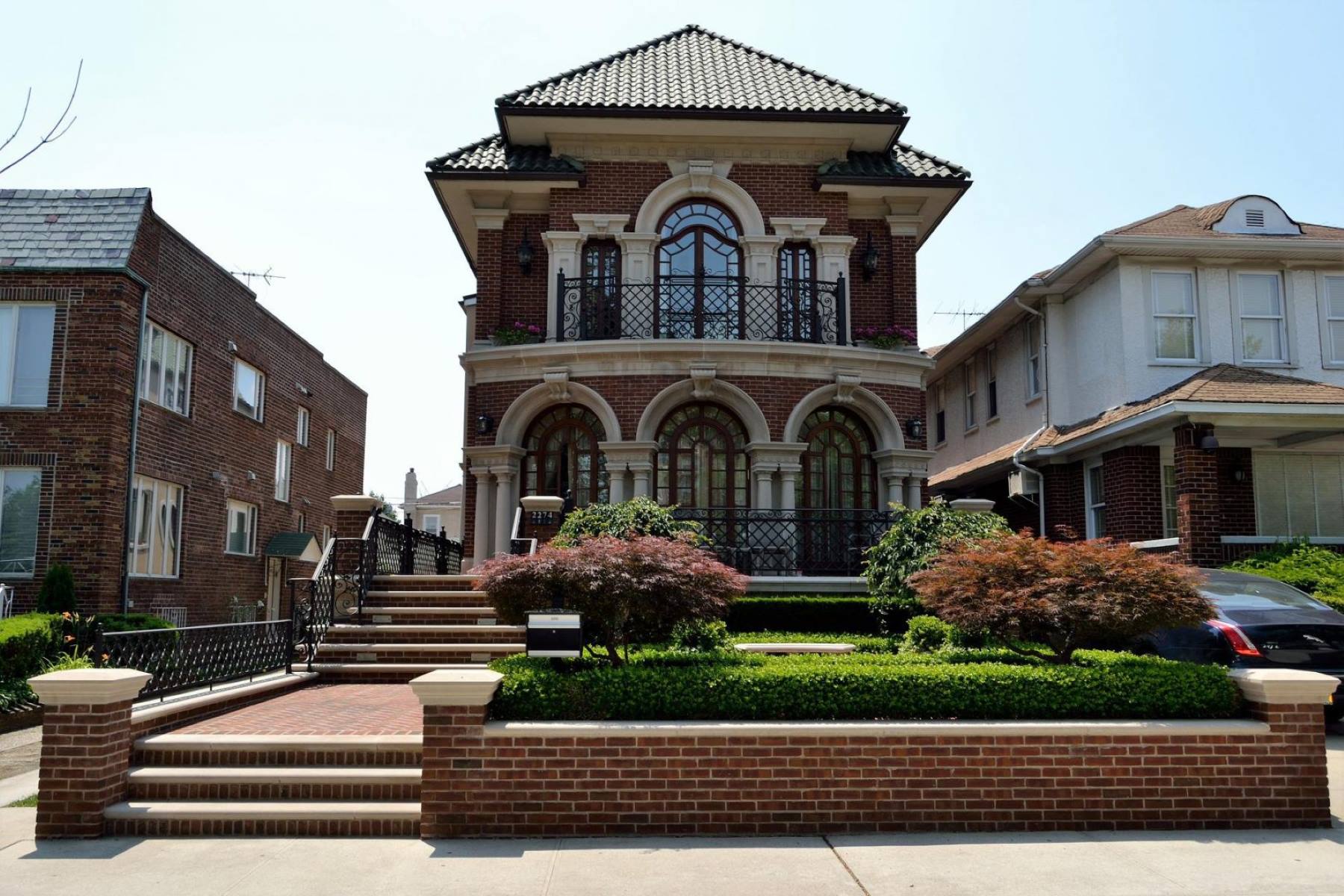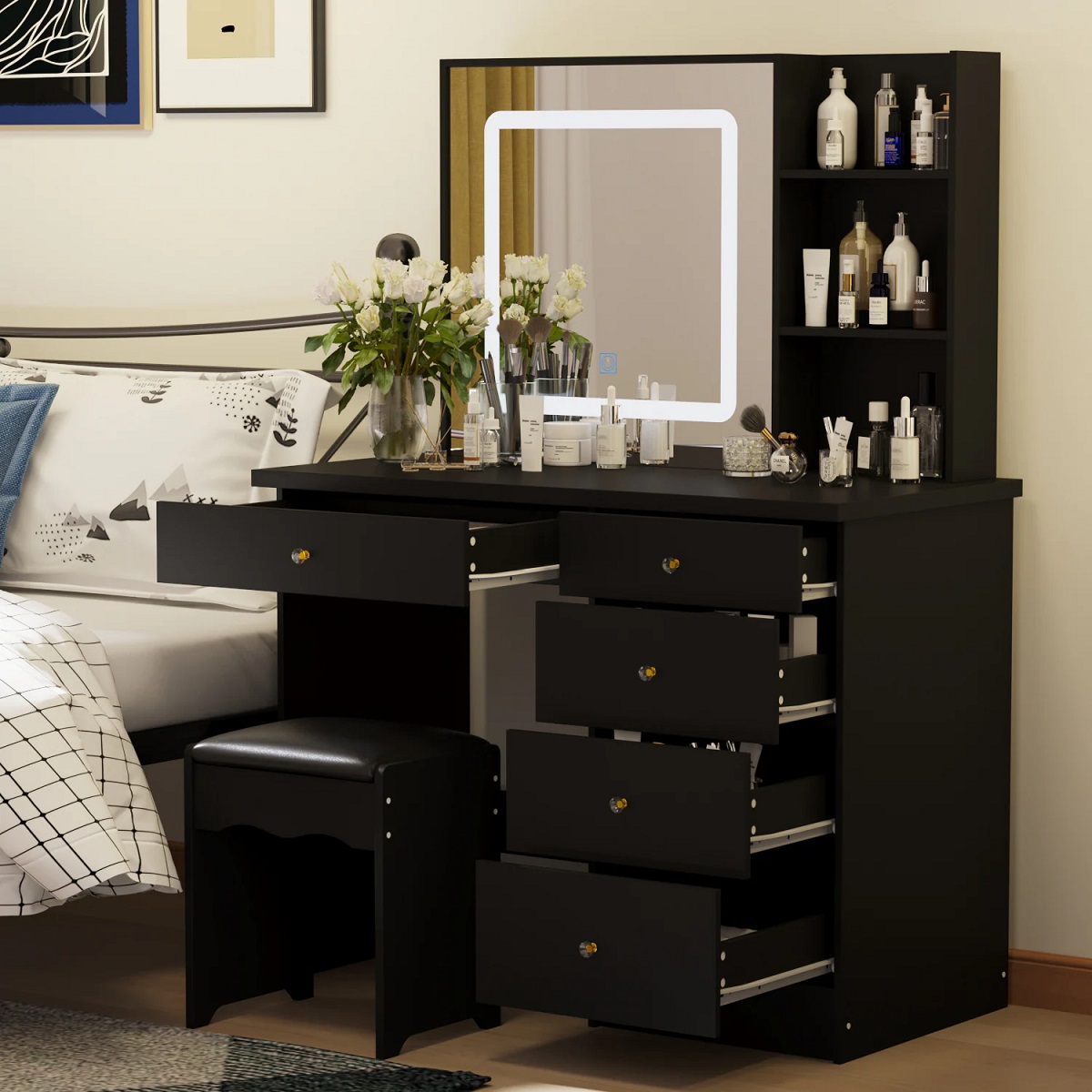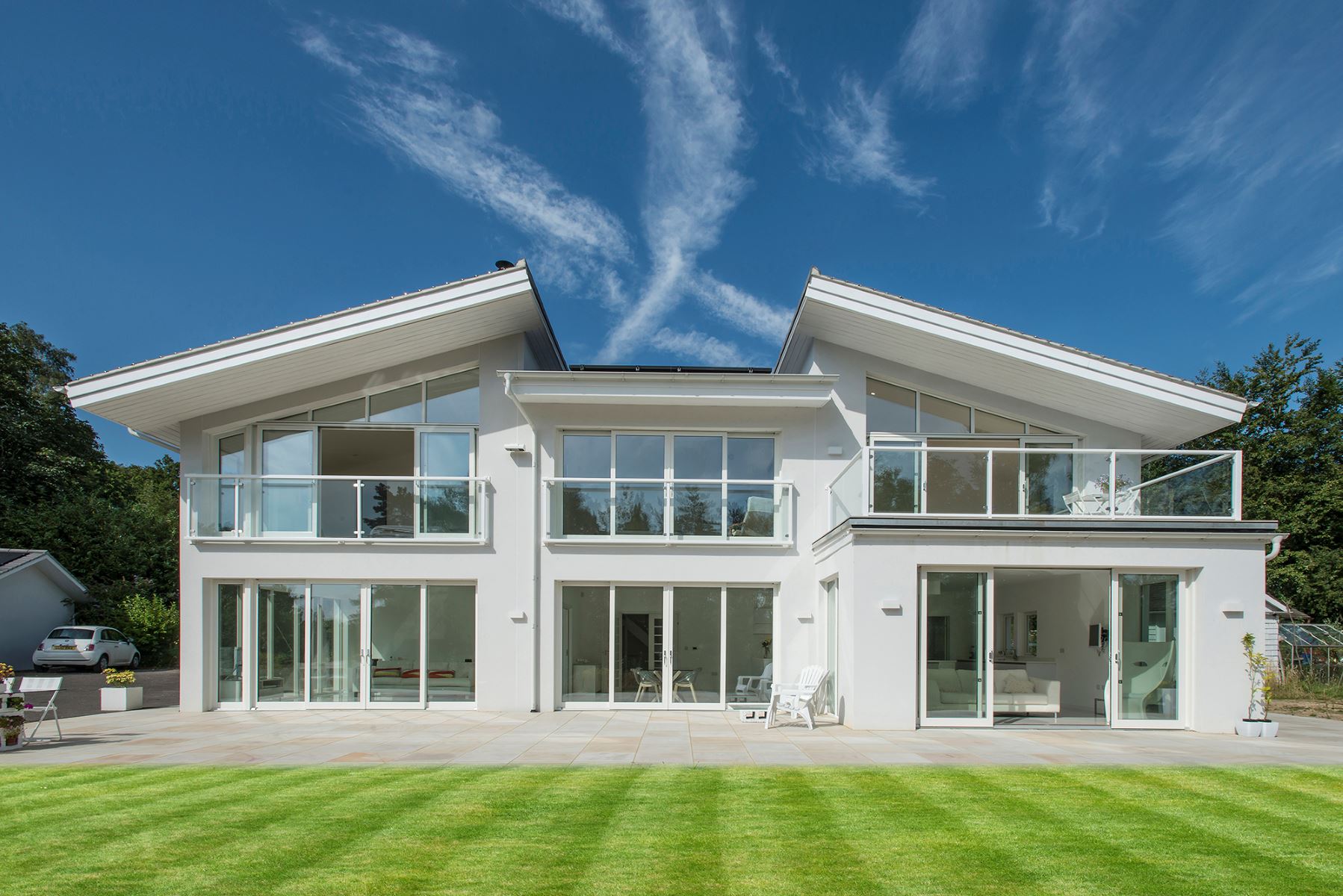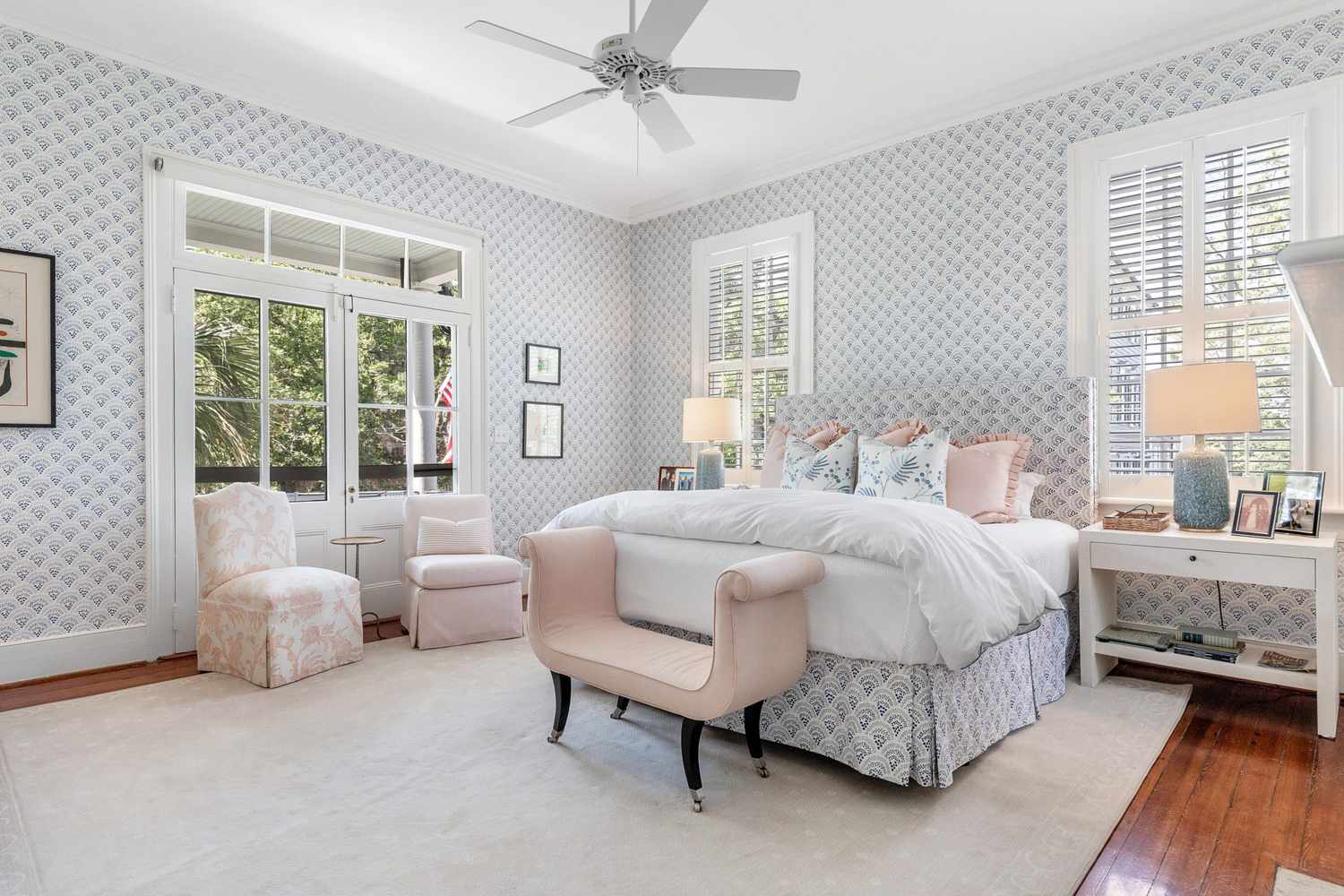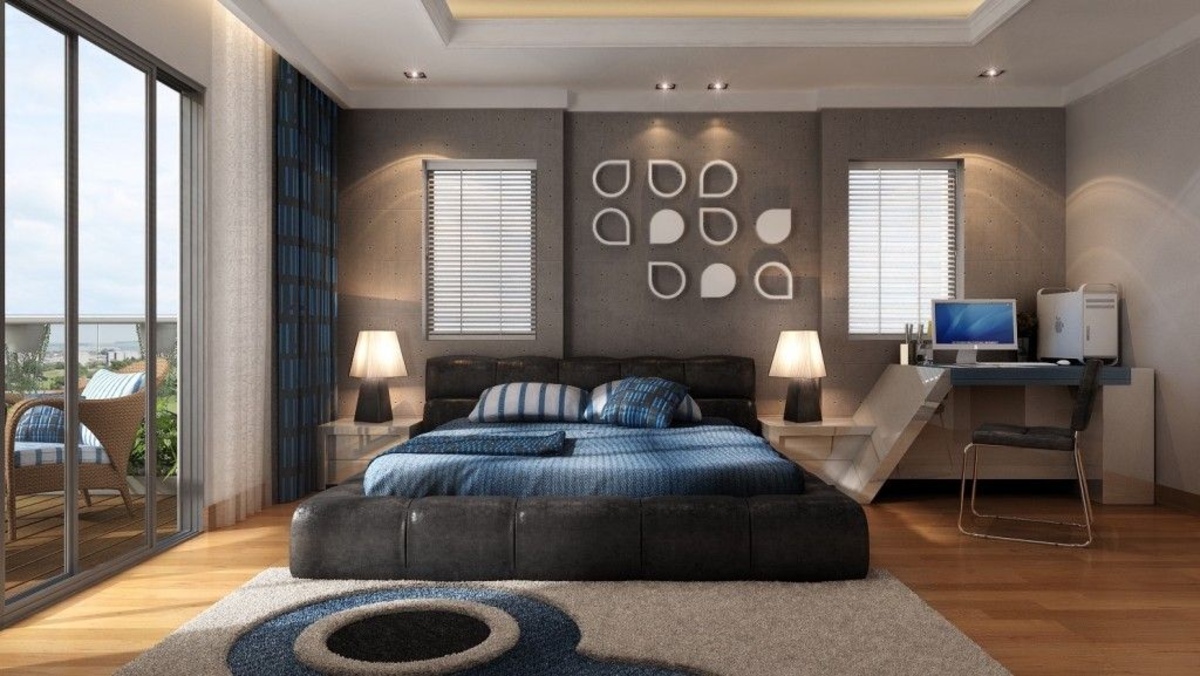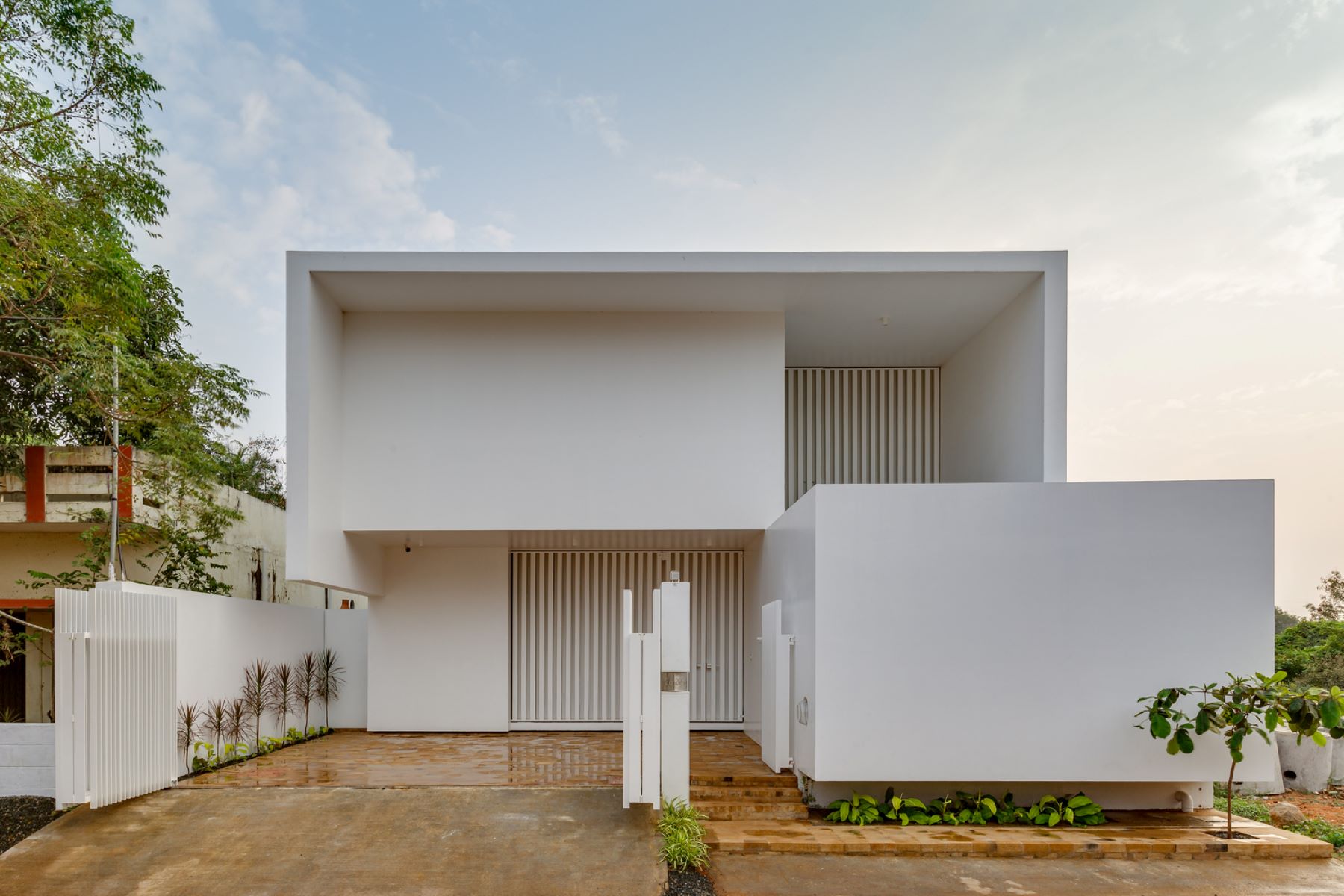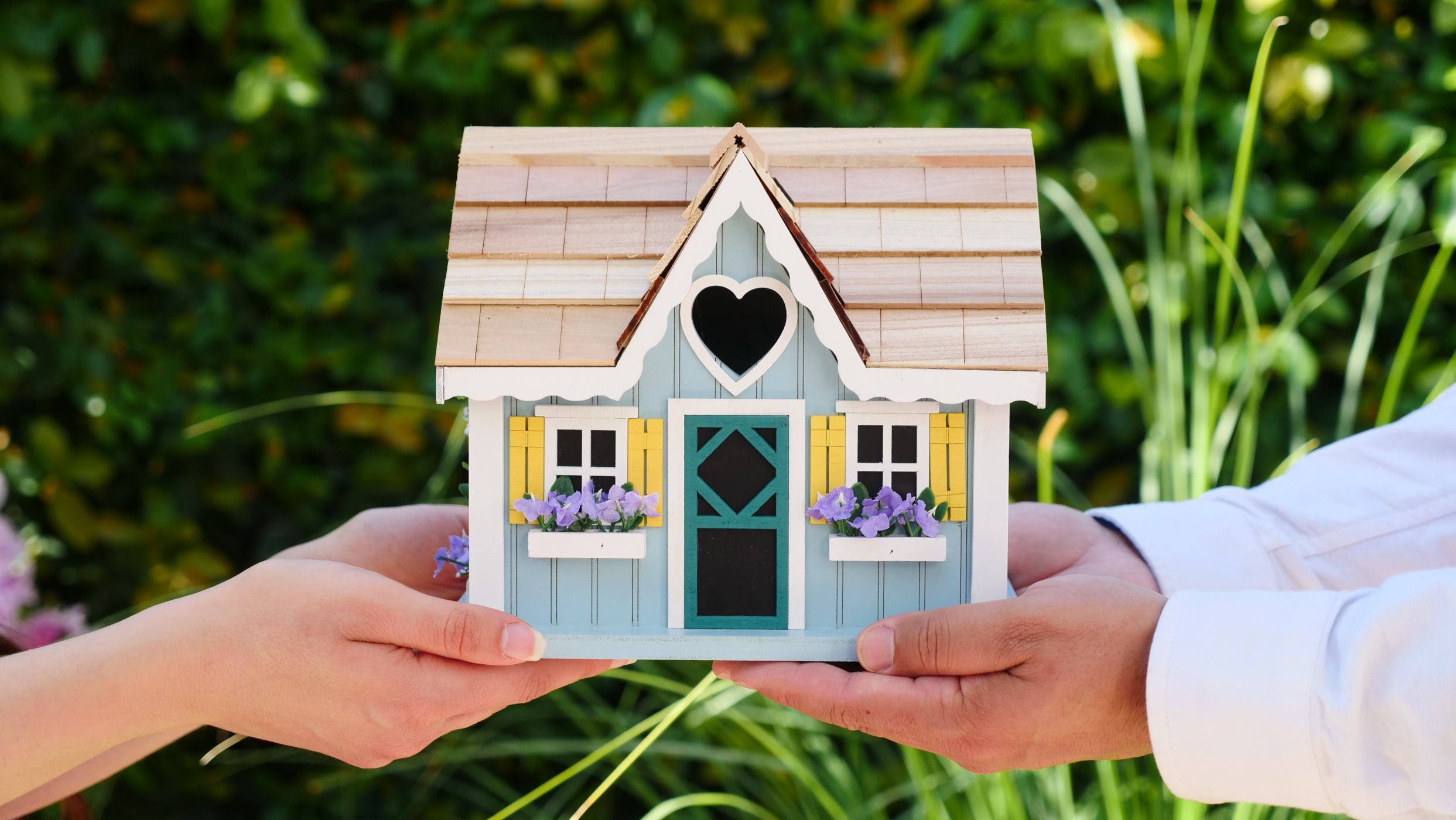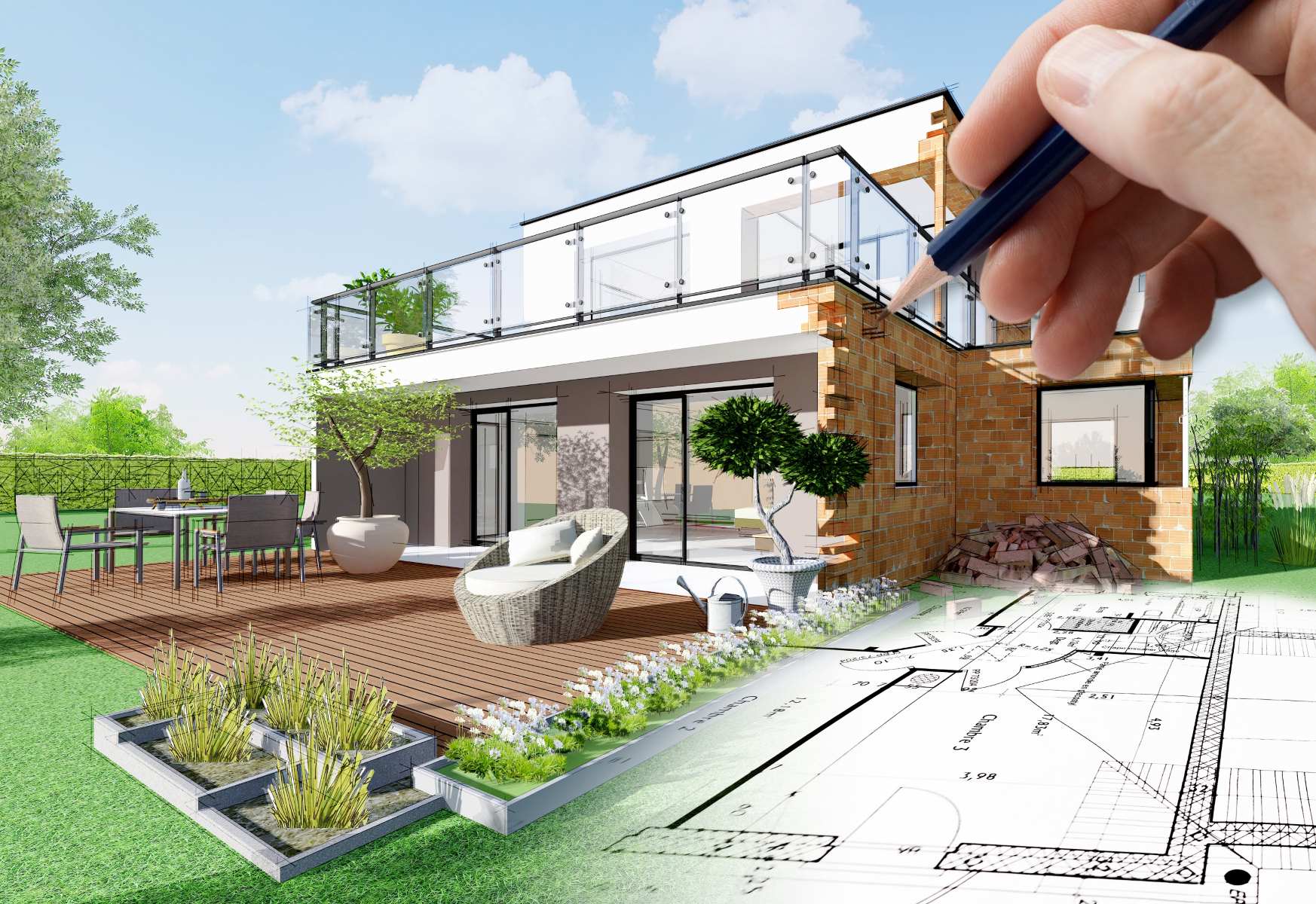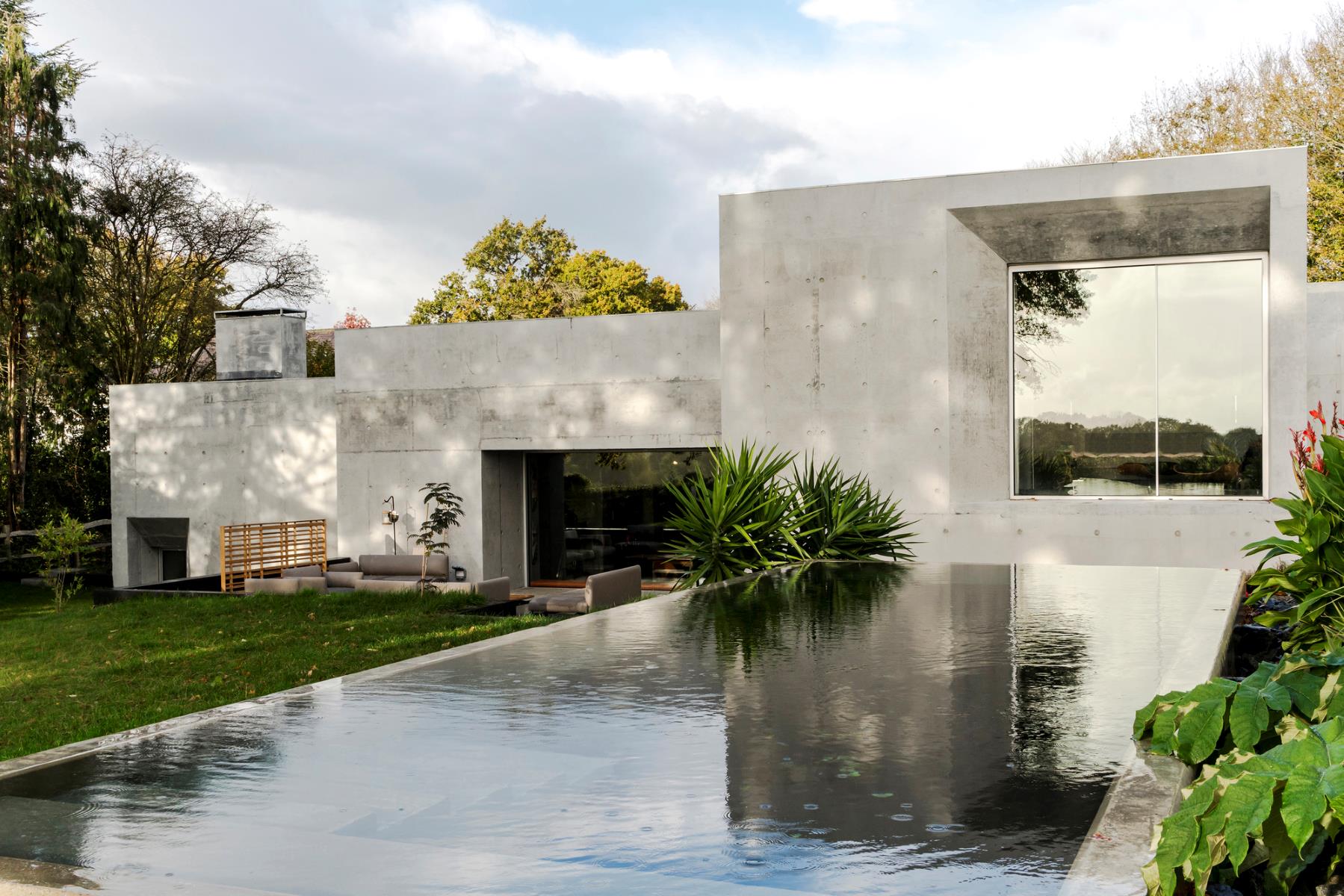Home>diy>Architecture & Design>How To Design A House With 3 Bedrooms And 2 Bathrooms In The USA
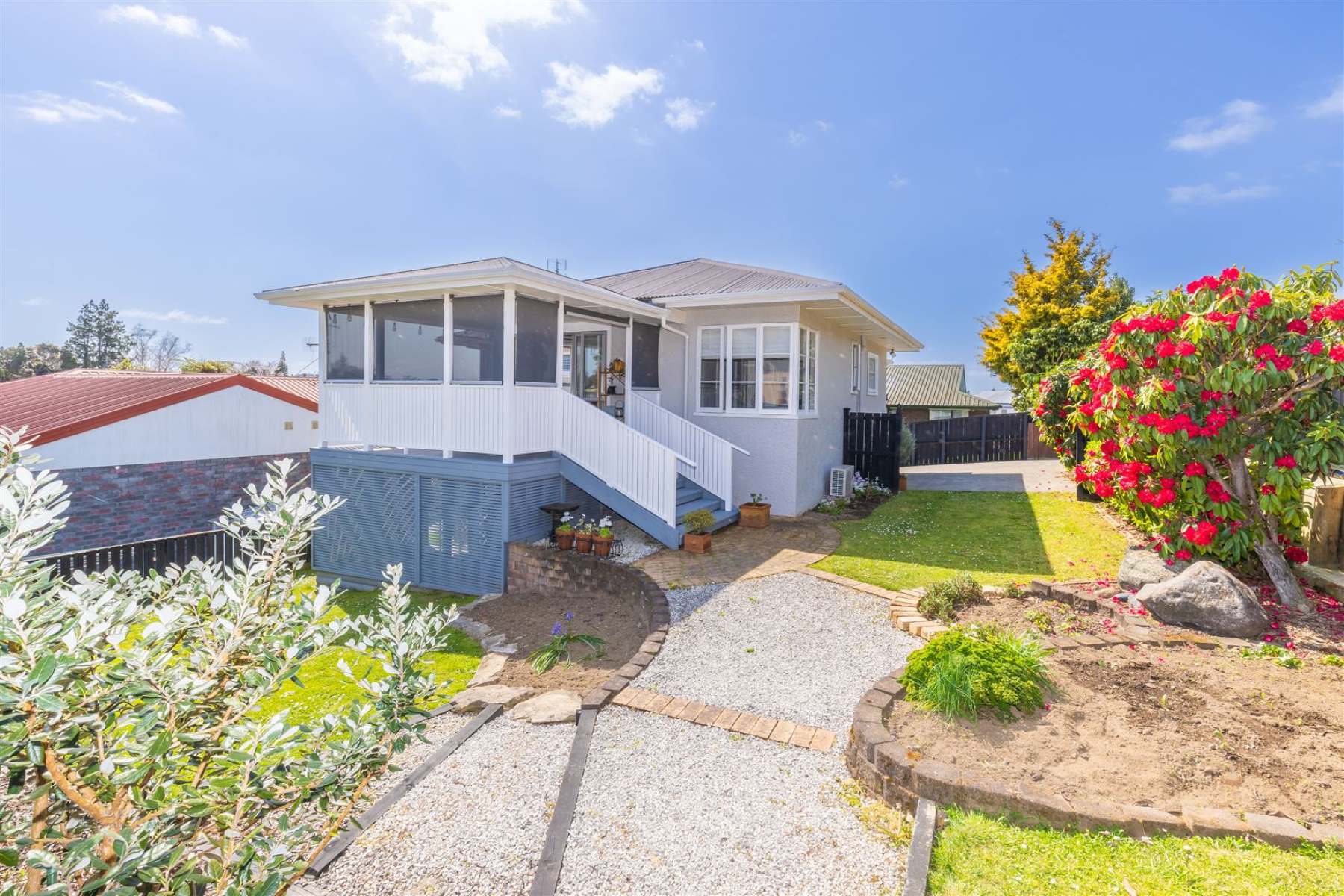

Architecture & Design
How To Design A House With 3 Bedrooms And 2 Bathrooms In The USA
Modified: March 6, 2024
Learn how to design a beautiful house in the USA with 3 bedrooms and 2 bathrooms. Get expert tips and techniques in architecture design to create your dream home.
(Many of the links in this article redirect to a specific reviewed product. Your purchase of these products through affiliate links helps to generate commission for Storables.com, at no extra cost. Learn more)
Introduction
Designing a house with 3 bedrooms and 2 bathrooms is a popular choice for families in the USA. It offers a comfortable living space with enough privacy and functionality to accommodate the needs of a modern household. However, designing a house requires careful consideration and planning to ensure that every aspect is tailored to your specific requirements.
In this article, we will explore the key factors to consider when designing a house with 3 bedrooms and 2 bathrooms in the USA. We will walk you through the step-by-step process of creating a well-designed and functional home that meets your family’s needs while also incorporating some exciting design elements.
Before diving into the design process, it’s important to have a clear understanding of your needs and preferences. Take some time to envision how you want your future home to look and feel. Consider factors such as the size of your family, your lifestyle, and any specific requirements you may have.
Designing a house is not just about aesthetics; it’s about creating a space that is practical, comfortable, and conducive to your everyday activities. With that in mind, let’s explore the key factors to consider before diving into the design process.
Key Takeaways:
- Designing a 3-bedroom, 2-bathroom house involves careful planning to create a functional and inviting home that meets your family’s needs and reflects your personal style.
- Consider factors such as layout, room sizes, materials, and lighting to ensure every aspect of your home enhances your living experience and showcases your creativity.
Read more: What Size Water Heater For A 3 Bedroom House
Factors to Consider Before Designing
Before embarking on the design process for your 3-bedroom, 2-bathroom house, it’s important to consider several key factors. These factors will help guide your design choices and ensure that your new home meets all of your needs and preferences.
1. Lifestyle and Family Size: Consider the size of your family and their lifestyle. Will you need additional space for children or pets? Do you entertain frequently or have overnight guests? Understanding your family’s needs will help determine the necessary number and size of bedrooms, bathrooms, and common areas.
2. Budget: Determine your budget for the project. This will impact the materials, finishes, and overall design choices you make. Consider whether you want to splurge on certain features or if you need to prioritize cost-effective options without compromising on quality.
3. Future Plans: Think about your future plans and how they may impact your design decisions. Are you planning to expand your family? Will you need additional guest rooms or a home office? Consider these possibilities to ensure that your design is flexible and can adapt to changing needs.
4. Accessibility: If you have any specific accessibility requirements or anticipate the need for them in the future, it’s important to incorporate them into your design. This includes features such as ramps, wider doorways, grab bars, and accessible bathrooms.
5. Location and Climate: Consider the geographical location and climate of your area. This will influence design choices such as insulation, window placement for natural light and ventilation, and materials that are suitable for the local climate.
6. Energy Efficiency: With the rising costs of energy, it’s important to incorporate energy-efficient features in your design. This includes choosing energy-efficient appliances, adequate insulation, and proper placement of windows to maximize natural light and minimize the need for artificial lighting during the day.
By considering these factors before starting the design process, you will have a solid foundation to guide your decision-making and create a well-designed, functional, and personalized house that meets your family’s needs and enhances your daily living experience.
Step 1: Determine the Total Area and Lot Size
Before diving into the specific design details, it’s important to determine the total area of your house and the size of your lot. This information will guide your design choices and ensure that the layout and proportions of your house are in harmony with the available space.
The total area of your house includes the dimensions of all the rooms, common areas, bathrooms, and any additional spaces such as a garage or basement. Measure the length and width of each room and calculate the total square footage. This will help you determine if you have enough space to accommodate the desired number of bedrooms and bathrooms.
The lot size refers to the area of land on which your house will be built. Consider the dimensions and shape of your lot, as well as any restrictions or regulations imposed by local authorities. This will help you plan the overall layout and placement of your house on the lot, taking into account factors such as setbacks, privacy, and outdoor space.
When determining the total area and lot size, it’s important to strike a balance between functionality and aesthetics. While you want to maximize the interior space, you also want to ensure that you have adequate outdoor space for activities such as gardening, recreation, or simply enjoying the outdoors.
Consider the orientation of your lot in terms of sunlight exposure and views. This will help you determine the placement of windows, balconies, or outdoor living areas to take advantage of natural light and scenic vistas.
Additionally, it’s important to factor in any zoning requirements or restrictions that may impact the overall design and layout of your house. This includes setbacks, height restrictions, or limitations on the number of floors.
By accurately determining the total area and lot size, you will ensure that your design is well-suited to the available space and can make the most of both the interior and exterior areas of your house.
Step 2: Deciding the Layout and Room Sizes
Once you have determined the total area and lot size, it’s time to decide on the layout and sizes of the rooms in your 3-bedroom, 2-bathroom house. The layout should be practical and efficient, maximizing the use of space while ensuring privacy and functionality.
Start by considering the placement of the bedrooms. Typically, the primary bedroom is located away from the other bedrooms for added privacy. Determine the size and placement of each bedroom, ensuring that there is enough space for a bed, storage, and any additional furniture you may need. Consider factors such as natural light and views when deciding the position of the windows in each bedroom.
The common areas, such as the living room, dining room, and kitchen, should flow seamlessly together to create an open and inviting space. Consider the size and shape of these areas, ensuring that they can comfortably accommodate your family and any guests you may have. Designate specific zones for different functions within each area, such as a dining area within the larger space of the living and dining room.
When determining the sizes of the rooms, it’s important to strike a balance. Bedrooms should be spacious enough to provide comfort, while common areas should have an appropriate size to facilitate movement and furniture placement without feeling cramped. Remember to consider any specific needs or preferences you may have regarding room sizes.
In addition to bedrooms and common areas, it’s important to allocate space for the bathrooms. Determine the size and layout of each bathroom, ensuring that they are functional and provide a level of privacy. Consider features such as a double vanity in the primary bathroom or a bathtub in one of the bathrooms.
When deciding on the layout, consider the flow and circulation within the house. Ensure that there are clear pathways between rooms and that the layout promotes a smooth and intuitive movement throughout the space. Pay attention to factors such as door placement and hallway widths to ensure accessibility and ease of movement.
By carefully deciding on the layout and sizes of the rooms, you will create a house that is both functional and aesthetically pleasing, providing comfort and privacy for you and your family.
Step 3: Planning the Bedroom Design
When designing a house with 3 bedrooms and 2 bathrooms, the bedroom design is a crucial aspect that contributes to the overall comfort and functionality of your home. Each bedroom should be designed to provide a peaceful and relaxing space for its occupants.
Start by determining the size and layout of each bedroom. Consider the dimensions of the room and how it can comfortably accommodate furniture such as a bed, nightstands, dressers, and a seating area if desired. It’s important to strike a balance between having enough space to move around and ensuring that the room feels cozy and inviting.
Consider the primary bedroom, which is typically the largest and offers the most privacy. Design this room to be a sanctuary, incorporating elements such as a comfortable bed, ample storage solutions, and a seating area if space allows. Pay attention to the placement of windows to maximize natural light and provide a pleasing view.
For the other bedrooms, adapt the design to suit their specific purpose. If one of the bedrooms will be used as a child’s room, consider adding playful touches with vibrant colors, age-appropriate furniture, and storage solutions that can accommodate toys and belongings. If one bedroom will serve as a guest room, focus on providing a comfortable and welcoming space with a quality bed, adequate storage, and proper lighting.
Incorporate personalized touches and design elements that reflect the preferences and personalities of the individuals who will occupy each bedroom. This can be done through the use of color schemes, artwork, decor, and furnishings that align with their tastes and create a sense of comfort and belonging.
Additionally, consider the functionality of the bedrooms. Adequate storage is crucial in bedrooms to keep belongings organized and create a clutter-free environment. Incorporate built-in closets, wardrobes, or other storage solutions to maximize space and ensure that there is enough storage for clothing, accessories, and personal items.
Pay attention to lighting design in the bedrooms. Incorporate a combination of overhead lighting, task lighting, and ambient lighting to create a versatile and layered lighting scheme. Consider the use of dimmers to adjust the lighting according to the desired mood and functionality.
Ultimately, the goal is to design the bedrooms in your 3-bedroom house to be comfortable retreats where individuals can relax, recharge, and find privacy within the home. By carefully planning the bedroom design, you will create spaces that cater to the needs and preferences of each occupant while contributing to the overall harmony and functionality of your house.
Read more: How To Open Up Split-Bedroom Design House
Step 4: Designing the Bathrooms
Designing the bathrooms in your 3-bedroom, 2-bathroom house is a key step in creating a functional and inviting home. Bathrooms should not only be aesthetically pleasing but also practical and efficient in meeting the needs of daily routines.
Start by determining the layout and size of each bathroom. Consider the available space and aim to create a layout that allows for easy movement and accessibility. The main bathroom, which will be used by multiple occupants, should have enough space to accommodate essential fixtures such as a toilet, sink, and bathtub or shower.
In the primary bathroom, consider adding additional features such as a double vanity, a spacious shower, or a separate bathtub. These features can enhance the functionality and luxurious feel of the space. Pay attention to the placement of fixtures to ensure a smooth flow and easy access.
For the secondary bathroom, focus on creating a functional space that can serve the needs of the remaining bedrooms and any guests. Consider whether a bathtub, shower, or combination of both would be most appropriate based on your preferences and the space available.
When selecting fixtures and materials for the bathrooms, consider both style and functionality. Choose fixtures that are not only visually appealing but also durable and easy to maintain. Consider the style and finish of faucets, showerheads, and hardware to create a cohesive design throughout the bathrooms.
Pay attention to storage solutions in the bathrooms. Incorporate vanity units, shelving, or cabinets to provide storage space for toiletries, towels, and other bathroom essentials. Consider built-in niches in the shower or bath area for added convenience.
Lighting design is crucial in the bathrooms. Ensure that there is adequate task lighting around the vanity area to provide proper illumination for grooming activities. Incorporate ambient lighting for a soothing atmosphere and consider adding dimmers to adjust the lighting according to different needs and moods.
Finally, consider the overall aesthetic of the bathrooms. Choose a color scheme that is soothing and harmonious. Consider incorporating tiles or other materials that are both practical and visually appealing. Pay attention to details such as mirrors, accessories, and decor to add personality and style to the space.
By carefully designing the bathrooms, you will create functional and visually appealing spaces that enhance your daily routines and contribute to the overall comfort and value of your 3-bedroom, 2-bathroom house.
Step 5: Creating a Functional Kitchen
The kitchen is often considered the heart of a home, and designing a functional kitchen is essential in a 3-bedroom, 2-bathroom house. A well-designed kitchen should not only be aesthetically pleasing but also efficient, practical, and able to handle the daily needs of cooking and entertaining.
Start by determining the layout of the kitchen. The most common kitchen layouts include the U-shaped, L-shaped, and galley layouts. Consider the available space and choose a layout that maximizes functionality and promotes smooth movement between different areas of the kitchen.
Focus on the work triangle concept, which comprises the sink, refrigerator, and stove. This concept ensures that these three key elements are easily accessible and close to each other, allowing for efficient workflow during meal preparation.
Consider the size and placement of appliances. Choose appliances that are appropriate for the size of your family and your cooking style. Ensure that there is enough counter space for food prep, as well as sufficient storage for utensils, cookware, and pantry items.
When selecting cabinets and storage solutions, prioritize ease of use and accessibility. Incorporate cabinets with adjustable shelves, pull-out drawers, and organizers to maximize storage efficiency. Consider a mix of open shelving and closed cabinets to display decorative items while keeping essential items within easy reach.
Lighting is crucial in the kitchen. Incorporate both task lighting and ambient lighting to create a well-lit and functional space. Install under-cabinet lighting to illuminate work surfaces and consider pendant lights or recessed lighting for ambient lighting.
Select durable and easy-to-clean materials for the kitchen surfaces. Consider materials such as quartz or granite for countertops, which are both visually pleasing and practical. Choose flooring materials that are durable and resistant to spills and stains, such as tile or hardwood.
Pay attention to the overall design and style of the kitchen. Choose a color scheme that complements the rest of the house and reflects your personal taste. Consider incorporating decorative elements such as backsplashes, tile patterns, or a statement island to add visual interest to the space.
Remember to design the kitchen to accommodate your specific needs and preferences. Consider any specific appliances or features that are essential for your cooking style, such as a double oven, a large sink, or a kitchen island with seating.
By carefully planning and designing a functional kitchen, you will create a space that is not only visually appealing but also efficient and practical, making it a joy to prepare meals and gather with family and friends in your 3-bedroom, 2-bathroom house.
When designing a house with 3 bedrooms and 2 bathrooms in the USA, consider the local building codes and regulations, as well as the needs of your family. It’s important to create a functional layout that maximizes space and provides privacy for each bedroom. Additionally, consider energy-efficient features and durable materials to ensure the longevity of the home.
Step 6: Living and Dining Room Design
The living and dining rooms are the social hubs of a home, where family and friends come together to relax, entertain, and share meals. The design of these spaces in a 3-bedroom, 2-bathroom house should be welcoming, comfortable, and conducive to various activities.
Begin by determining the layout and placement of furniture in the living and dining rooms. Consider the dimensions of the space and arrange furniture in a way that promotes conversation and easy movement. Create designated areas for lounging, dining, and entertainment, ensuring that there is enough space to comfortably accommodate your family and guests.
For the living room, choose comfortable seating options such as a sofa, armchairs, or sectional that can accommodate the desired number of people. Add coffee tables and side tables for convenience and consider incorporating a media console or TV stand if desired. Create a focal point in the room, such as a fireplace or a prominent piece of artwork.
In the dining room, select a dining table and chairs that are proportionate to the space and can accommodate the number of people you expect to seat. Consider a table that can extend or have additional leaves for flexibility during gatherings. Pay attention to lighting above the dining table, using a chandelier or pendant lights to create a visually appealing and well-lit area.
When choosing color schemes and materials for the living and dining rooms, consider the overall style and flow of the house. Choose colors that complement each other and create a cohesive look. Consider the durability and ease of maintenance of materials such as flooring, upholstery, and window treatments.
Pay attention to lighting design in these areas. Incorporate a combination of ambient lighting for overall illumination, task lighting for specific activities such as reading or food preparation, and accent lighting to highlight architectural features or decorative elements. Use dimmers to adjust the lighting levels to suit different moods and occasions.
Consider the placement of windows and window treatments in the living and dining rooms. Choose treatments that allow for privacy when needed while also maximizing natural light and views. Consider incorporating curtains or blinds that can be easily opened or adjusted to control the amount of light and privacy.
Finally, add personal touches and accessories to make the living and dining rooms feel like home. Incorporate decorative items such as artwork, rugs, throw pillows, and plants to add warmth and personality to the space. Display items that hold sentimental value or reflect your interests and hobbies.
By carefully designing the living and dining rooms, you will create inviting spaces that cater to various activities and provide a comfortable and welcoming environment for your family and guests in your 3-bedroom, 2-bathroom house.
Step 7: Including Essential Storage Spaces
Storage is a crucial consideration in any home, and including essential storage spaces in a 3-bedroom, 2-bathroom house is essential for keeping belongings organized and maintaining a clutter-free environment. Having dedicated storage areas will help maximize your living space and create a sense of order throughout the house.
Start by assessing your storage needs and identifying the types of items you need to store. Consider everything from clothing and accessories to household supplies, cleaning products, and recreational equipment. This will help determine the specific storage solutions required in each area of the house.
In the bedrooms, prioritize incorporating ample closet space. Walk-in closets are ideal but if space is limited, consider installing built-in or freestanding wardrobes with adjustable shelves and hanging rods to accommodate different types of clothing and accessories. Utilize storage solutions such as drawer organizers and shoe racks to keep items neat and easily accessible.
In the bathrooms, maximize storage by including vanity units with drawers and cabinets below the sink. This will provide space for toiletries, towels, and other bathroom essentials. Consider adding additional storage options such as medicine cabinets or shelving above the toilet to utilize vertical space.
In the kitchen, focus on optimizing storage solutions for cookware, utensils, and food items. Incorporate kitchen cabinets of varying sizes and heights to accommodate different items. Utilize features such as pull-out shelves, lazy susans, and drawer dividers to maximize storage efficiency. Consider a pantry or designated storage area for dry goods, canned goods, and small appliances.
In the living and dining rooms, incorporate storage solutions that seamlessly blend with the overall design. Consider built-in shelving units, bookcases, or console tables that can house books, decorative items, and entertainment equipment. Utilize multifunctional furniture pieces such as ottomans or coffee tables with hidden storage compartments.
Additionally, consider incorporating storage solutions in other areas of the house, such as the hallway or entryway. Install hooks or a coat rack for hanging coats and bags. Consider a bench or console table with drawers or baskets for storing shoes or small items.
When designing storage spaces, it’s important to strike a balance between functionality and aesthetics. Choose storage solutions that not only meet your needs but also complement the overall design and style of the house. Consider using matching materials, finishes, and hardware to create a cohesive look throughout the storage areas.
By including essential storage spaces in your 3-bedroom, 2-bathroom house, you will create a well-organized and clutter-free environment that enhances your daily living experience and helps maintain a sense of order throughout your home.
Read more: What Size Storage Unit For A 3 Bedroom House
Step 8: Choosing the Right Materials and Finishes
Choosing the right materials and finishes is a crucial step in the design process of a 3-bedroom, 2-bathroom house. The materials and finishes you select will not only impact the aesthetics of your home but also its durability, functionality, and overall quality. It’s essential to consider factors such as style, maintenance requirements, and longevity when making these decisions.
Start by considering the flooring materials for each room. Choose options that are both visually appealing and practical for the specific space. Common choices for bedrooms include carpeting, hardwood flooring, or laminate flooring. In the bathrooms and kitchen, materials such as ceramic tiles, vinyl, or waterproof laminate are often used due to their durability and water resistance.
When selecting materials for kitchen countertops and bathroom vanities, consider both style and functionality. Materials such as granite, quartz, or solid surface countertops are popular choices for their durability and easy maintenance. Choose finishes that complement the overall design aesthetic of your house.
For cabinetry, consider the material, finish, and hardware. Solid wood, engineered wood, or laminate are commonly used for kitchen and bathroom cabinets. Ensure that the chosen material is resistant to moisture and can withstand daily use. Opt for finishes that are easy to clean and maintain while blending with the overall design scheme.
Wall finishes play a significant role in the overall aesthetics of your home. Consider options such as paint, wallpaper, or textured finishes. Choose colors and patterns that reflect your personal style while creating a cohesive look throughout the house.
Lighting fixtures and hardware should also be carefully considered. Choose fixtures that are not only visually appealing but also functional and efficient. Consider energy-efficient options such as LED lighting to reduce energy consumption. Select hardware finishes that complement the overall design style, such as brushed nickel or oil-rubbed bronze.
Incorporate eco-friendly materials whenever possible. Look for sustainable and recycled options for flooring, countertops, and cabinetry. Consider using low VOC (volatile organic compound) paints and finishes to minimize indoor air pollution.
Consider the maintenance requirements of the materials and finishes you choose. Some materials may require regular sealing, polishing, or cleaning, while others may be more low-maintenance. It’s important to select materials that fit your lifestyle and maintenance preferences.
Lastly, keep in mind your budget when selecting materials and finishes. Balancing cost and quality is essential to ensure that you achieve the desired look and durability without exceeding your budget. Consider prioritizing high-quality materials in areas that have a significant impact on the overall design, while opting for more cost-effective options in areas that are less visible or have lower usage.
By choosing the right materials and finishes, you will create a 3-bedroom, 2-bathroom house that is not only visually stunning but also functional, durable, and reflective of your personal style and preferences.
Step 9: Lighting Design and Fixtures
Lighting design and fixtures play a crucial role in creating an inviting and functional atmosphere in a 3-bedroom, 2-bathroom house. Proper lighting enhances the overall aesthetics, improves functionality, and sets the desired mood in each room. Consider the following aspects when designing the lighting for your home.
Start by understanding the different types of lighting and their purposes. There are three main categories: ambient lighting, task lighting, and accent lighting. Ambient lighting provides overall illumination and sets the general tone in a room. Task lighting focuses on specific activities such as reading, cooking, or working. Accent lighting highlights architectural features, artwork, or decorative elements.
In each room, incorporate a combination of these lighting types to create a layered and versatile lighting scheme. Consider how the natural light enters the space and plan the artificial lighting accordingly. Use a mix of fixtures, including ceiling-mounted lights, wall sconces, floor lamps, and table lamps, to provide both direct and indirect lighting sources.
In bedrooms, prioritize creating a relaxing and cozy atmosphere. Incorporate bedside lamps or wall-mounted sconces that provide ample task lighting for reading. Consider dimmable overhead fixtures to adjust the lighting level according to different activities and moods. Use accent lighting to highlight any artwork or decorative elements.
In the bathroom, focus on providing adequate task lighting that is both functional and flattering. Install vanity lights on either side of the mirror to minimize shadows on the face. Consider adding additional overhead fixtures or recessed lighting to evenly illuminate the entire space. Utilize dimmers to adjust the lighting level based on your needs and preferences.
In the kitchen, prioritize task lighting above work areas such as the sink, countertop, and stove, where adequate lighting is crucial for food preparation. Install under-cabinet lighting to provide direct illumination for tasks. Consider pendant lights or a chandelier above the dining area for ambient lighting. Ensure that the workspace is well-lit and free from shadows.
In the living and dining rooms, create a flexible lighting design that can accommodate various activities and moods. Incorporate a combination of ambient lighting with overhead fixtures, task lighting with table or floor lamps, and accent lighting with wall sconces or picture lights. Consider using dimmers to adjust the lighting intensity according to the occasion.
When choosing lighting fixtures, consider the overall design style of your home. Opt for fixtures that complement the architecture and interior design. Pay attention to the size and scale of the fixtures in relation to the space they will occupy. Choose energy-efficient bulbs to reduce energy consumption and consider incorporating smart lighting systems for added convenience and control.
Lastly, carefully plan the placement of electrical outlets and switches to ensure accessibility and convenience. Strategically locate outlets for ease of use and consider installing dimmer switches wherever possible to provide flexibility in adjusting the lighting level.
By thoughtfully designing the lighting and selecting suitable fixtures, you will create a well-lit and visually appealing 3-bedroom, 2-bathroom house that enhances the overall functionality and atmosphere of each space.
Step 10: Exterior Design and Landscape Planning
The exterior design and landscape of your 3-bedroom, 2-bathroom house play a vital role in creating an appealing and welcoming first impression. It is important to carefully plan and design the exterior spaces to complement the overall style of your home and maximize both aesthetics and functionality.
Start by considering the architectural style of your home and the surrounding environment. The exterior design should harmonize with the neighborhood and the natural surroundings. Research architectural styles that resonate with your vision and incorporate elements that enhance the overall curb appeal.
Plan the layout and design of outdoor spaces, such as the front yard, backyard, and any additional outdoor areas. Take into account factors such as privacy, views, and the purpose of each space. Determine if you want to include features such as a patio, deck, or outdoor seating area.
Consider the use of diverse plantings to create an engaging and appealing landscape. Choose plants that are suitable for the local climate and require minimal maintenance. Incorporate a mix of trees, shrubs, flowers, and ground cover to add visual interest and provide a welcoming atmosphere.
When designing outdoor living spaces, consider functionality, comfort, and aesthetics. Choose furniture and accessories that can withstand outdoor elements and provide comfortable seating and dining options. Add lighting to expand the usability of the outdoor spaces during evenings and create a warm ambiance.
Consider incorporating sustainable and eco-friendly elements into your landscape design. Install rain barrels or a drip irrigation system to conserve water. Choose native plants that are adapted to the local climate and require less water and maintenance. Create spaces for composting or recycling to encourage sustainable practices.
Pay attention to the pathways and entryways of your home. Ensure they are well-designed, safe, and accessible. Use durable materials such as natural stone, pavers, or concrete for paths and driveways. Consider adding lighting to highlight pathways and create a welcoming entrance.
Exterior lighting is an important element that should not be overlooked. Strategically place lighting fixtures to highlight architectural features, illuminate pathways, and enhance the overall ambiance. Consider using motion sensor lights for added security and energy efficiency.
Don’t forget about practical considerations such as storage sheds, garbage and recycling enclosures, or outdoor utilities. Plan for these necessities and ensure they blend seamlessly with the overall design and landscaping of your home.
Lastly, it’s important to regularly maintain and care for your exterior spaces. Consider ongoing maintenance tasks such as mowing the lawn, trimming shrubs, and cleaning outdoor furniture. Regularly inspect and repair any damages to ensure that your exterior spaces remain inviting and well-maintained.
By carefully planning the exterior design and landscape of your 3-bedroom, 2-bathroom house, you will create a visually appealing and functional outdoor space that complements the overall beauty of your home and enhances your living experience.
Conclusion
Designing a house with 3 bedrooms and 2 bathrooms requires careful planning and consideration to ensure that every aspect of the home meets your family’s needs and reflects your personal style. Throughout the steps discussed in this article, we have explored the essential factors to consider and the key design decisions to make in order to create a well-designed, functional, and inviting home.
By determining the total area and lot size, you lay the foundation for the layout and proportions of your house. Deciding on the size and placement of each room, including the bedrooms and bathrooms, ensures privacy and functionality for every member of the household.
Creating a functional kitchen and designing the living and dining rooms that accommodate the needs of your family and guests allows for comfortable and enjoyable daily living experiences. Including essential storage spaces throughout the house helps maintain an organized and clutter-free environment.
Choosing the right materials and finishes sets the tone for the overall aesthetics and durability of your home. Thoughtfully designing the lighting and selecting suitable fixtures creates the right ambiance and enhances the functionality of each room.
Finally, the exterior design and landscape planning add the finishing touch to your home, creating a welcoming and visually appealing curb appeal while maximizing outdoor functionality.
By following these steps and infusing your personal style and preferences, you can design a 3-bedroom, 2-bathroom house that is uniquely tailored to your lifestyle and needs. Investing time and effort into the design process will result in a home that you and your family will enjoy for years to come.
Remember, every step of the design process is an opportunity to showcase your creativity and create a space that meets your vision for the ideal home. Enjoy the journey and embrace the excitement of designing a house that truly feels like your own.
Frequently Asked Questions about How To Design A House With 3 Bedrooms And 2 Bathrooms In The USA
Was this page helpful?
At Storables.com, we guarantee accurate and reliable information. Our content, validated by Expert Board Contributors, is crafted following stringent Editorial Policies. We're committed to providing you with well-researched, expert-backed insights for all your informational needs.
